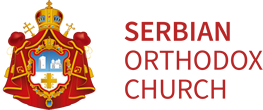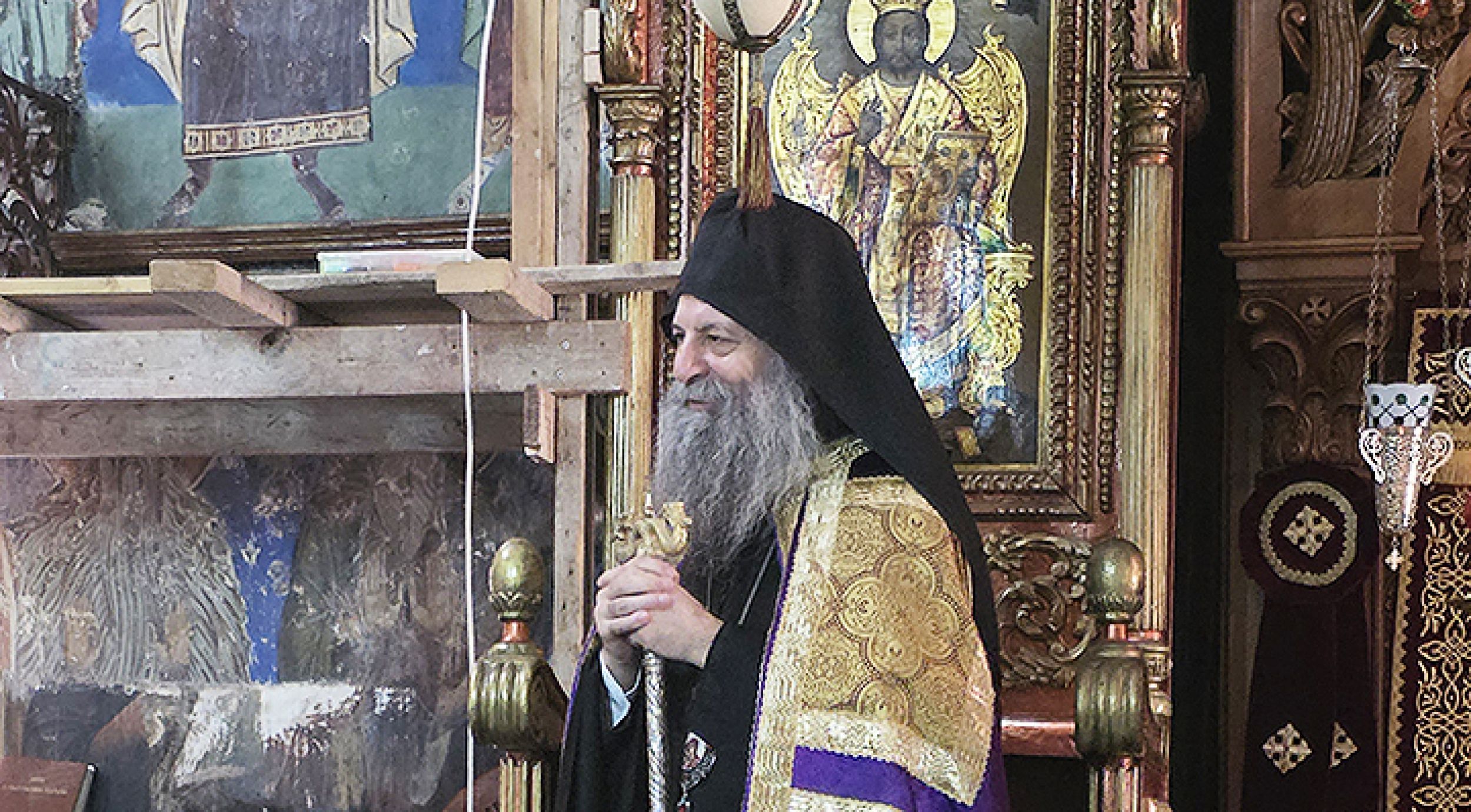Patriarch Porfirije at the monastery of Saint Sabbas the Sanctified: Here lie the roots of Christian, Orthodox, and Serbian spirituality
Following in the footsteps of the first Serbian Archbishop, Saint Sava, who visited the Monastery of Saint Sabbas the Sanctified eight centuries ago βÄ™ bringing back to the Serbian people the pastoral staff and the miraculous icons of the Mother of God, the Three-Handed and the Milk-Giver, His Holiness Patriarch kyr Porfirije today also made his way to this great and ancient sanctuary, hidden in the Judean Desert.
Warmly received by the hegumen and the brotherhood, Patriarch Porfirije venerated the relics of the monasteryβÄôs founder, Saint Sabbas the Sanctified, which are kept in the main church dedicated to the Annunciation. On this occasion, Patriarch Porfirije stated:
βÄ™ Here lie the roots of our spirituality βÄ™ Christian, Orthodox, and Serbian spirituality. It was here that our Saint Sava received the blessing of God and the blessing of Saint Sabbas the Sanctified for the Monastery of Hilandar to become a nursery of Serbian spirituality, and that the Serbian people throughout history, starting from Saint Sava to the Second Coming of Christ, remain connected not only with Mount Athos but also with Palestine, with the Lavra of Saint Sabbas the Sanctified, with the land that was trodden by the feet of our Lord Jesus Christ, with the Holy City of Jerusalem βÄ™ the place of the Crucifixion, the place of the Resurrection of the Lord, and the ultimate confirmation of GodβÄôs love and the pledge of our salvation.
The renowned Lavra of Saint Sabbas is one of the oldest and most significant monasteries of the Orthodox Church. It played a crucial role in the development of monasticism, theology, church art, and the defense of the Orthodox faith against heresies. The Lavra was founded by Saint Sabbas the Sanctified himself in the late 5th century. At the age of eighteen, he arrived in the Holy Land from his hometown of Moutalaske in Cappadocia, became a disciple of Saint Euthymius the Great and his fellow ascetic Saint Theoctistus, and later established the famous Lavra along with several other monasteries, where thousands of monks lived in ascetic devotion. At the same time, together with Saint Theodosius the Great, he fervently and courageously defended the decrees of the Fourth Ecumenical Council of Chalcedon in 451. One of his most significant contributions is the Typicon, which established the order of Church services and testifies to the sublime and majestic monastic tradition of the monasteries of the Holy Land.
In the mid-8th century, the Lavra was also home to Saint John of Damascus, the greatest theologian, philosopher, and hymnographer of the Orthodox Church of his time.
Warmly received by the hegumen and the brotherhood, Patriarch Porfirije venerated the relics of the monasteryβÄôs founder, Saint Sabbas the Sanctified, which are kept in the main church dedicated to the Annunciation. On this occasion, Patriarch Porfirije stated:
βÄ™ Here lie the roots of our spirituality βÄ™ Christian, Orthodox, and Serbian spirituality. It was here that our Saint Sava received the blessing of God and the blessing of Saint Sabbas the Sanctified for the Monastery of Hilandar to become a nursery of Serbian spirituality, and that the Serbian people throughout history, starting from Saint Sava to the Second Coming of Christ, remain connected not only with Mount Athos but also with Palestine, with the Lavra of Saint Sabbas the Sanctified, with the land that was trodden by the feet of our Lord Jesus Christ, with the Holy City of Jerusalem βÄ™ the place of the Crucifixion, the place of the Resurrection of the Lord, and the ultimate confirmation of GodβÄôs love and the pledge of our salvation.
The renowned Lavra of Saint Sabbas is one of the oldest and most significant monasteries of the Orthodox Church. It played a crucial role in the development of monasticism, theology, church art, and the defense of the Orthodox faith against heresies. The Lavra was founded by Saint Sabbas the Sanctified himself in the late 5th century. At the age of eighteen, he arrived in the Holy Land from his hometown of Moutalaske in Cappadocia, became a disciple of Saint Euthymius the Great and his fellow ascetic Saint Theoctistus, and later established the famous Lavra along with several other monasteries, where thousands of monks lived in ascetic devotion. At the same time, together with Saint Theodosius the Great, he fervently and courageously defended the decrees of the Fourth Ecumenical Council of Chalcedon in 451. One of his most significant contributions is the Typicon, which established the order of Church services and testifies to the sublime and majestic monastic tradition of the monasteries of the Holy Land.
In the mid-8th century, the Lavra was also home to Saint John of Damascus, the greatest theologian, philosopher, and hymnographer of the Orthodox Church of his time.

